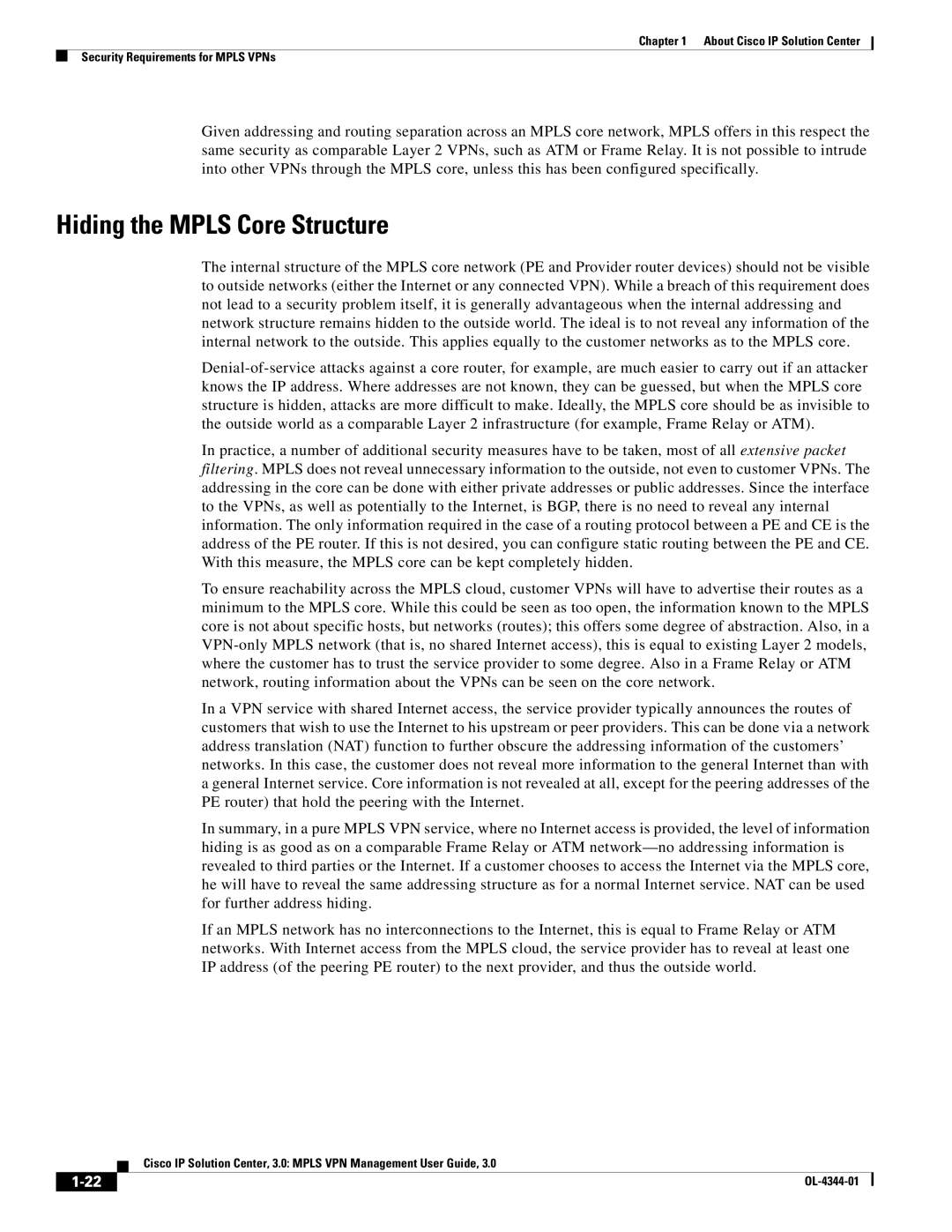
Chapter 1 About Cisco IP Solution Center
Security Requirements for MPLS VPNs
Given addressing and routing separation across an MPLS core network, MPLS offers in this respect the same security as comparable Layer 2 VPNs, such as ATM or Frame Relay. It is not possible to intrude into other VPNs through the MPLS core, unless this has been configured specifically.
Hiding the MPLS Core Structure
The internal structure of the MPLS core network (PE and Provider router devices) should not be visible to outside networks (either the Internet or any connected VPN). While a breach of this requirement does not lead to a security problem itself, it is generally advantageous when the internal addressing and network structure remains hidden to the outside world. The ideal is to not reveal any information of the internal network to the outside. This applies equally to the customer networks as to the MPLS core.
In practice, a number of additional security measures have to be taken, most of all extensive packet filtering. MPLS does not reveal unnecessary information to the outside, not even to customer VPNs. The addressing in the core can be done with either private addresses or public addresses. Since the interface to the VPNs, as well as potentially to the Internet, is BGP, there is no need to reveal any internal information. The only information required in the case of a routing protocol between a PE and CE is the address of the PE router. If this is not desired, you can configure static routing between the PE and CE. With this measure, the MPLS core can be kept completely hidden.
To ensure reachability across the MPLS cloud, customer VPNs will have to advertise their routes as a minimum to the MPLS core. While this could be seen as too open, the information known to the MPLS core is not about specific hosts, but networks (routes); this offers some degree of abstraction. Also, in a
In a VPN service with shared Internet access, the service provider typically announces the routes of customers that wish to use the Internet to his upstream or peer providers. This can be done via a network address translation (NAT) function to further obscure the addressing information of the customers’ networks. In this case, the customer does not reveal more information to the general Internet than with a general Internet service. Core information is not revealed at all, except for the peering addresses of the PE router) that hold the peering with the Internet.
In summary, in a pure MPLS VPN service, where no Internet access is provided, the level of information hiding is as good as on a comparable Frame Relay or ATM
If an MPLS network has no interconnections to the Internet, this is equal to Frame Relay or ATM networks. With Internet access from the MPLS cloud, the service provider has to reveal at least one IP address (of the peering PE router) to the next provider, and thus the outside world.
Cisco IP Solution Center, 3.0: MPLS VPN Management User Guide, 3.0
| ||
|
